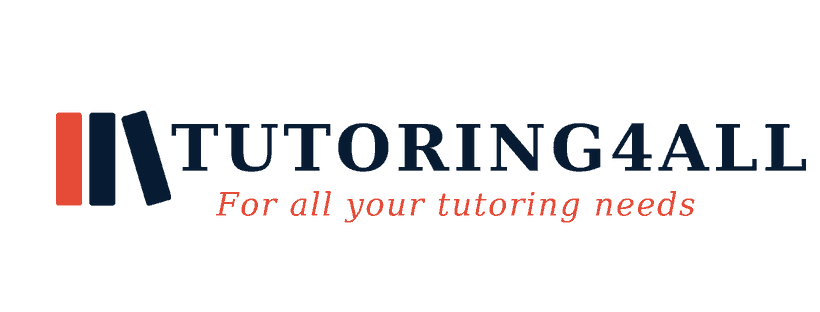Dear Students
Now, more than ever, you find yourself looking for resources to help you as you tackle homeschooling. You’ve been thrown tasks from school, you are looking at a number of different texts and have a million questions circling in your head.
You are also filled with a little worry of what this means to your schooling and how you will be able to adapt to ensure that you are able to come out of this prepared to attack your HSC.
Not to worry. The team at Tutoring4All is here to help you every step of the way. From understanding rubrics and assessment tasks to simply explaining the format of the English paper, we have you covered.
To continue adding to our Preliminary Course Blog Edition, we have put together an understanding of Module A – Contemporary Possibilities for Standard English.
We will start with an understanding of the rubric and then move to a text that is prescribed for this module to see how it is adopted in practice.
Rubric – remember this is always the first place that you start. Let’s take a look to understand what we are doing…
As you follow below the module is in italics and our comments in regular font. We have deconstructed the module paragraph by paragraph so it’s easier for you to navigate.
In this module, students extend their knowledge, understanding and appreciation of the ways that different communication technologies shape the ways that we read, navigate, understand and respond to digital, multimedia, multimodal and nonlinear texts. They develop understanding of the creative possibilities made available through these rapidly evolving technologies in the ways we communicate and represent ideas and experiences.
A key clue in this paragraph is that the form of the text that you will be studying in this module won’t be a traditional poem or novel. You will be engaging with ‘new’ ways that composers deliver their message or story to audiences. For example, you might analyse a podcast or an interactive film that allows audiences to select different endings. Through your analysis, you’ll understand that some techniques will be traditional yet the way that they are presented and manipulated by their creator to achieve meaning might be done in a way that is creative and represents ideas and experiences in a unique way.
Students engage in a detailed study of one complex multimodal or digital text for example film, media or interactive narratives. To support their study, students also explore a range of texts that typically use contemporary technologies such as film, television, online news services and specific social media platforms. They apply their understanding of the nature, scope and ethical use of digital technology in their own responding and composing.
This paragraph gives us further clues that the texts students are engaging with a non-traditional and focuses on the way that technology has disrupted the traditional forms of literature to create contemporary formats. During your study of this module you will be focusing on one complex multimodal or digital text to direct your learning and compare this against a film, television show or online news services to develop an understanding about the new ways that communication is achieved.
Students develop a deeper appreciation and understanding of the power of communication technologies to reach a broad audience for a range of purposes and the significance of this mode of communication in a global world. Through a close study of the selected texts students appreciate the active roles of both composer (author, poet, playwright, director, designer and so on) and responder (reader, listener, viewer, an audience and so on) in controlling and choosing the reading pathways through texts. They analyse and interpret the ways composers use and manipulate a variety of aural, language and visual devices to shape our understanding of what we listen to, read or view and may explore notions of hybridity and intertextuality.
During your study of this module and in particular the texts you analyse, there is a focus on how the text is providing an active role for both the composer and the responder. The technological aspects of these texts means that the reader plays a part in creating meaning as they are able to choose for themselves the pathway they choose when engaging with the text rather than the composer simply presenting an idea. You will also be required to identify the elements of hybridity (when 2 different text types come together) and intertextuality (when the text you are engaging with references another well known text).
Through their responding and composing students gain increasing confidence in experimenting with a range of language and visual forms and features to individually or collaboratively design and create their own multimodal or digital texts to communicate and represent their ideas; understanding the importance of creating a responsible digital footprint.
This paragraph gives an indication of the type of assessment you will be completing for this module. The biggest clue, it won’t be a traditional style essay BUT you are still required to provide analysis and about the text you are studying. You are encouraged to experiment with the form by presenting a multimodal (if you’re not too sure about this one, check out our blog post on multimodals) and use a variety of language and visual forms. Basically get creative as possible!
Through viewing, listening or reading students analyse and assess the text’s specific features and form. They express their knowledge and understanding, clearly and concisely, using appropriate register, structure and modality. They independently and collaboratively plan, draft, appraise and refine their own responses to texts applying the conventions appropriate to form of syntax, spelling and grammar.
Like always, you are still expected to present a high quality piece of work that is sophisticated and clearly answers the analytical question you have been asked to consider.
So that we can understand the above, let’s look at two examples.
The first is a podcast – it’s season one of a series called Serial. It is a criminal investigation into a real life murder of a teenager in America. It tracks the alibi of the murder, interviews different persons involved and delves deeper into pieces of evidence that was brushed over during the initial investigation.
You can find a link of it here: https://serialpodcast.org/season-one
Together with the podcast, there is an abundance of additional resources including interactive infographics, newspaper articles and opinion pieces. Keep in mind this has all arisen years after the case was heard and trialled by the courts.
So what does this have to do with the module?
Well let’s break it down and see how we can interpret the rubric by dissecting the elements of the text…
- The form of the podcast itself is a digital, multimedia, multimodal and nonlinear text. It can only be accessed via digital means – be that a computer or smartphone that has an internet connection. It encompasses multiple forms of media – you hear the voice of the presenter, it includes original snippets of the court case and there are also elements that need to be read and looked at such as the infographic. Each episode captures a different element of the case. This means that we are moving backwards, forwards and side to side as we follow particular stories of each person involved. If you haven’t already picked up where we are going with this point yet – yes this means it is a nonlinear text. We do start at one point and finish at the end but it’s not one straight path to get there – we take a few diversions along the way so that when we get to the end we have a greater appreciation of the whole story.
- As the podcast explores an event that happened many years ago, the form allows it to explore notions of hybridity and intertextuality. The podcast references many other texts such as news snippets and letters and then pieces them together like a collage. Or in other words, creates and hybrid text.
- Although the case was heard many years ago in a small American town, the podcast has now gained international attention. This shows the power that communication technologies to reach a broad audience for a range of purposes and the significance of this mode of communication in a global world. It is possible that exposure of the podcast will attract public attention many years after the event will spark new interest, new evidence or encourage a new witness to come forward. This means that the text has a range of purposes – to inform, to entertain and to position audiences to question their surroundings and past events. The significance of this communication in a global world is that it may bring attention to voices that are otherwise marginalised or not usually celebrated within a public sphere.
- Let’s think about the additional resources that are available with the podcast. We mentioned before that there are infographics, newspaper articles and opinion pieces. What impact does this have on audiences? Well it allows audiences and readers an opportunity to controlling and choosing the reading pathways through texts. Well what does this mean? Put basically, composers of these texts don’t want you to think one certain way. Or simply adopt their point of view. They want you to come up with your own meaning. Unlike ‘traditional’ texts, these forms focus on the role of the reader and their ability to select the material that resonates with them, apply their own environmental understandings and then control and choose how meaning from the text is developed.
Hopefully the above analysis of the text helps provide an understanding of what this module is about.
The second text that provides some insight into this module is a series of blog posts based on Sherlock Holmes. In case you are not familiar with the Sherlock Holmes series, Mr Holmes is a detective who solves a range of investigative cases. He is a well known fictional character who is created as a personal detective. It could be argued that his modern counterpart is someone like James Bond.
There are many traditional portrayals of Mr Holmes including novels, short stories, images and television episodes.
But the text that is used for study in this module is a set of blog posts – you can find the link here http://www.johnwatsonblog.co.uk.
The blog posts are written by a member of the public who is channeling a character from the series and writing his point of view about events that are presented in the episodes of Sherlock Holmes. Other people have commented on the blog posts in response to the entry. The additional materials for study include YouTube clips and feature length movies. It is obvious that the portrayal of Mr Holmes’ character has changed over time.
So now it’s your turn, how do you think these texts reflect this module? Why don’t you have a go at putting some thoughts together and sharing them with us.
When you are studying these texts it’s also important to consider the elements of a multimodal text they involve as you will be producing a multimodal text for your assessment. You’d want to make sure you give it a fair attempt as you will have to create another one as part of your study for Year 12.
We hope the above helps! Any questions drop us a line anytime.

